Zuwachs in der Beutelsammlung / addition to my alms purse collection
Geschrieben in Sticken am 21.07.2020 von Eva-Maria
Meine Sammlung von Almosenbeuteln hat Zuwachs bekommen. "Der Neue" begeistert mit einem mädchenhaften Farbschema und jeder Menge funkelnder Details. Und es hat auch nur knapp drei Jahre gedauert, dieses Lieblingsstück fertig zu stellen. Gut Ding will eben Weile haben, wie man so schön sagt. ![]() Nun aber genug geredet, lasst mich euch die Bilder zeigen!
Nun aber genug geredet, lasst mich euch die Bilder zeigen!
There's a new addition to my collection of alms purses. The new "girly one" features bright pink hues and lots of sparkly details. And it only took me three years to finish this new favourite piece. Good things take time, as one says. ![]() Enough talk - let's move on to the pictures.
Enough talk - let's move on to the pictures.
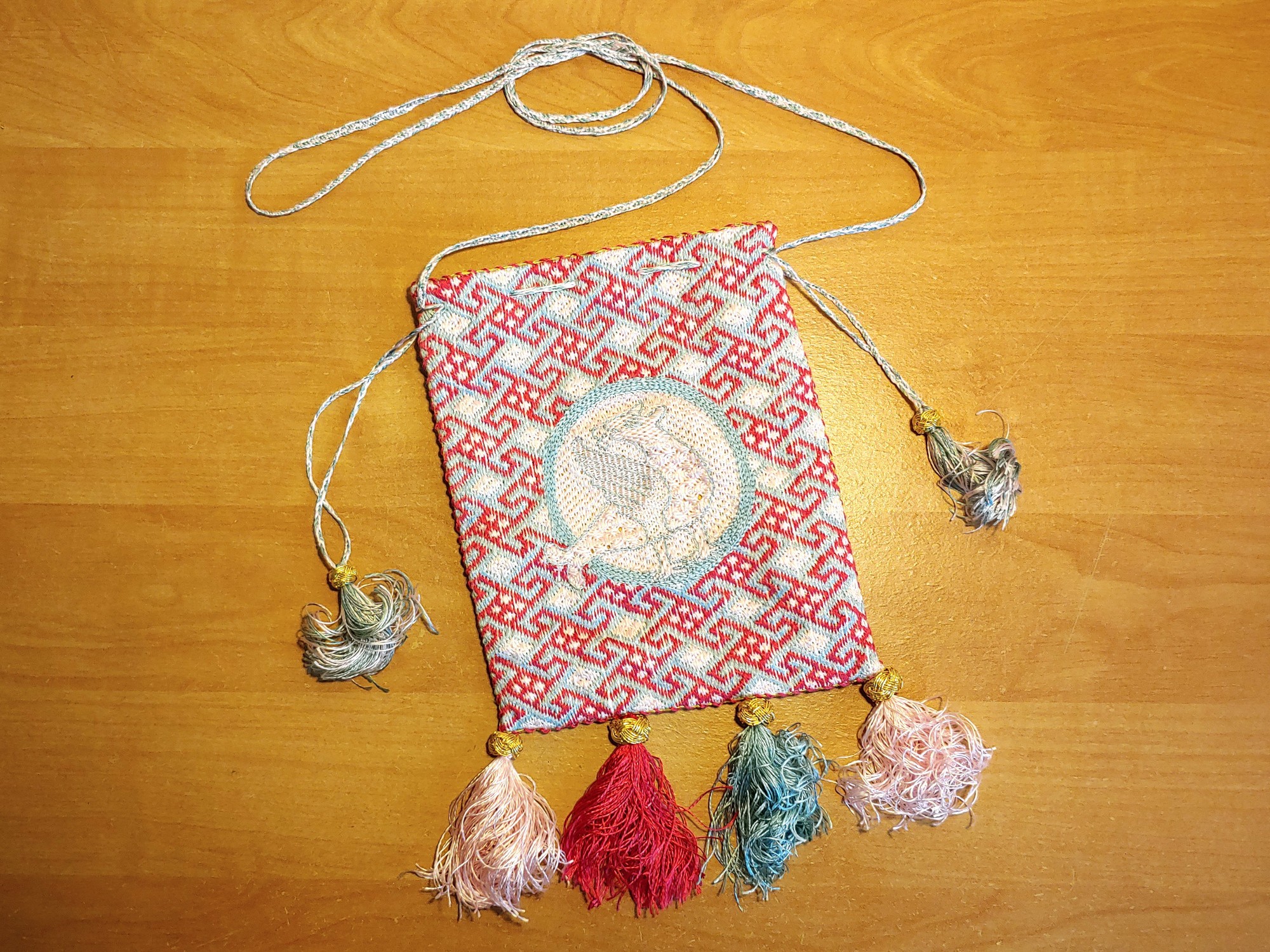
A medieval alms pouch with a pattern found in the treasury of the Sint-Servaaskerk (IV-Nr. 18-4) in Maastricht und a central bird motiv that's been taken from an embroidered antependium now in the treasury of Halberstadt (IV-Nr. 94).
All the edges are adorned with a braiding stitch of silk and gold threads and the tassel heads finished off with Turk's head knots of real gold gimp.
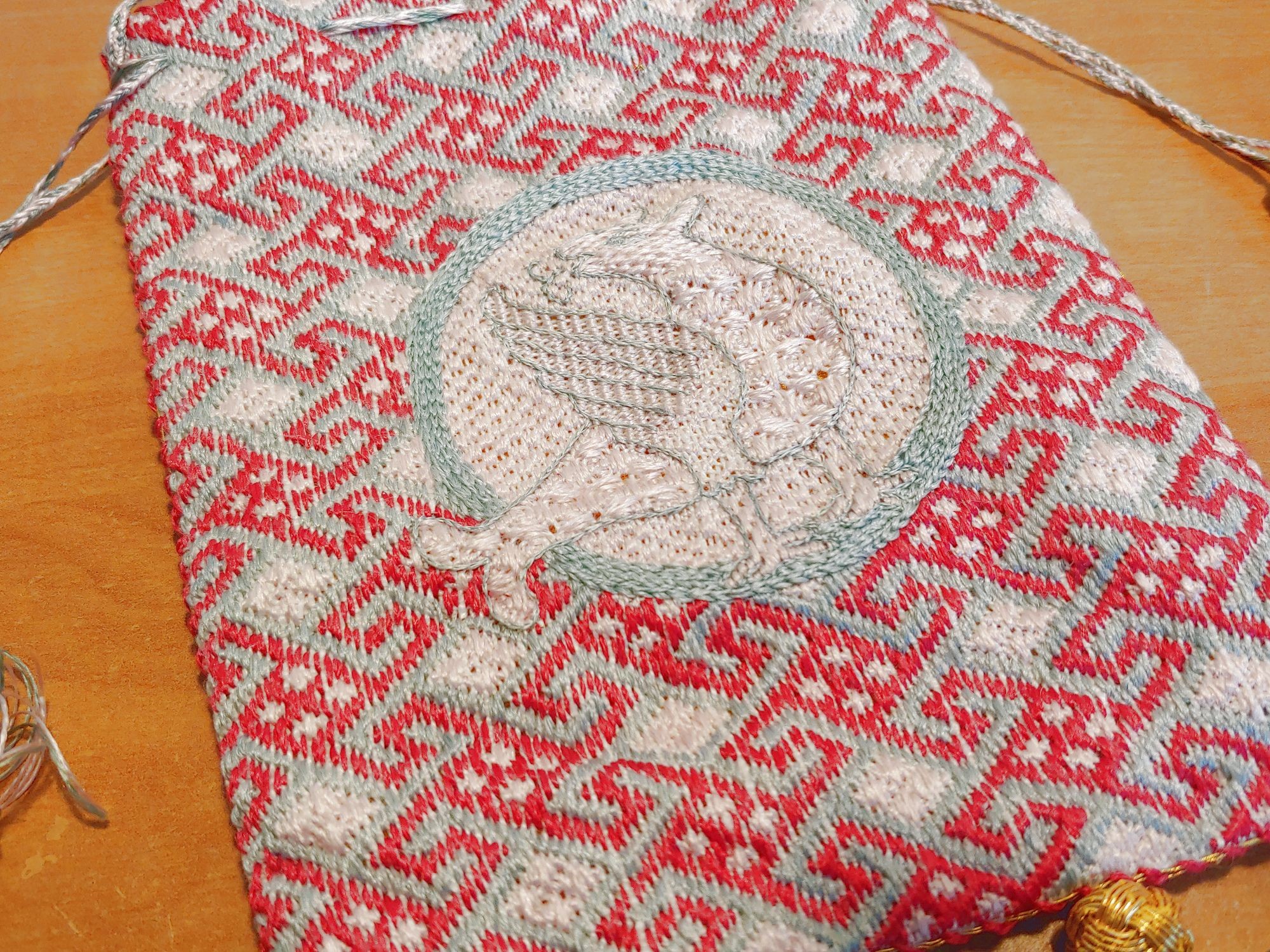
Hinweis: Ich kenne kein erhaltendes Beutelexemplar aus dem 14. Jahrhundert, das ein Mittelmotiv aufweist. Der Beutel ist also keine Replik, kommt aber in Ausführung und Formensprache den mittelalterlichen Originalen nahe.
The central bird motiv was filled with counted stitches that can usually be found in medieval whitework embroidery ("Opus Teutonicum").
Cave: I know of no extant medieval alms purse of the 14th century that features a central motiv. Therefore, this purse is no replica of a medieval original but approximates the extant purses in design and embroidery.
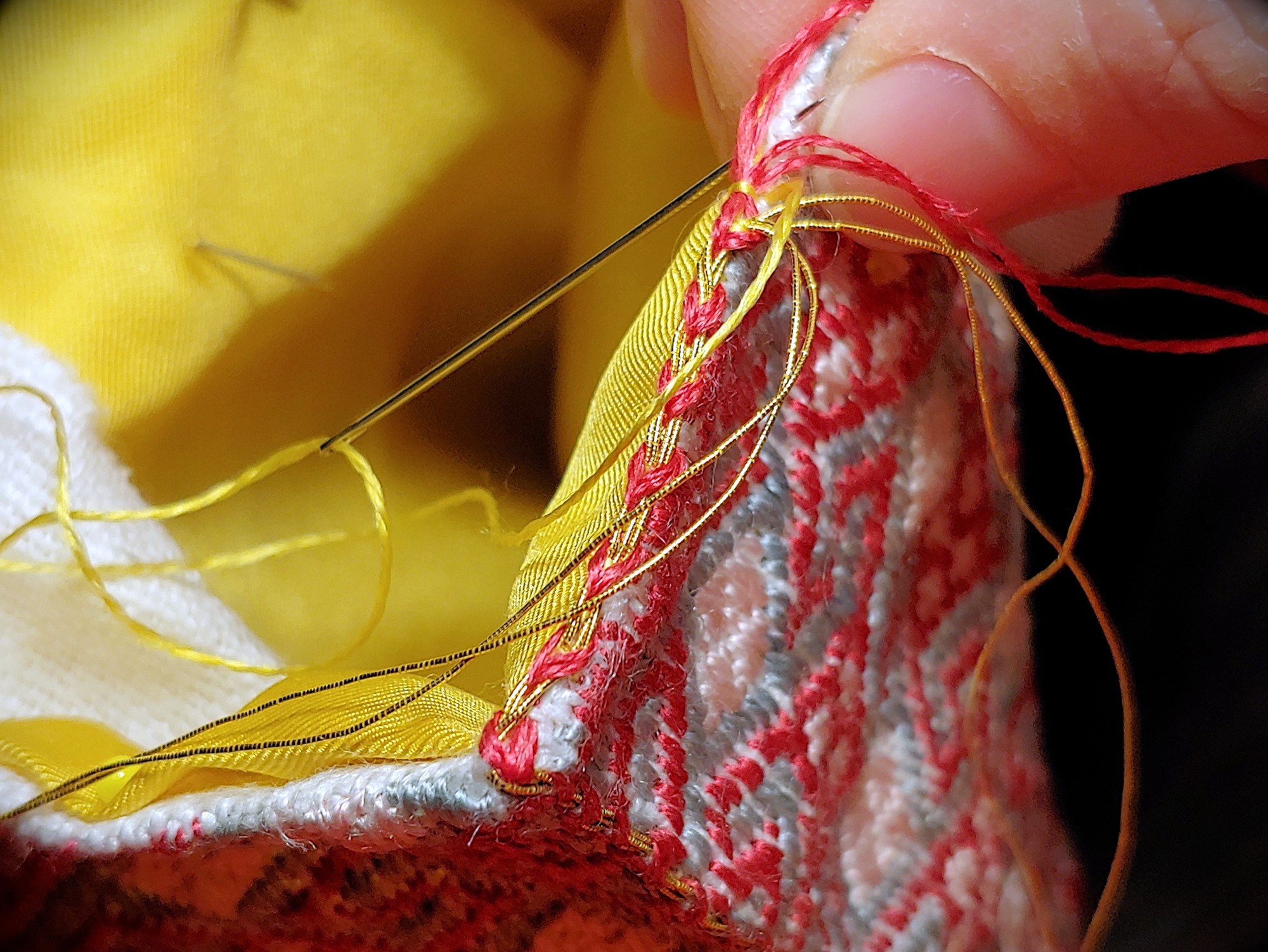
All the edges were neatened with a braiding stitch of silk and gold threads. Once again I fell back on the excellent tutorial of Medieval Silkwork.
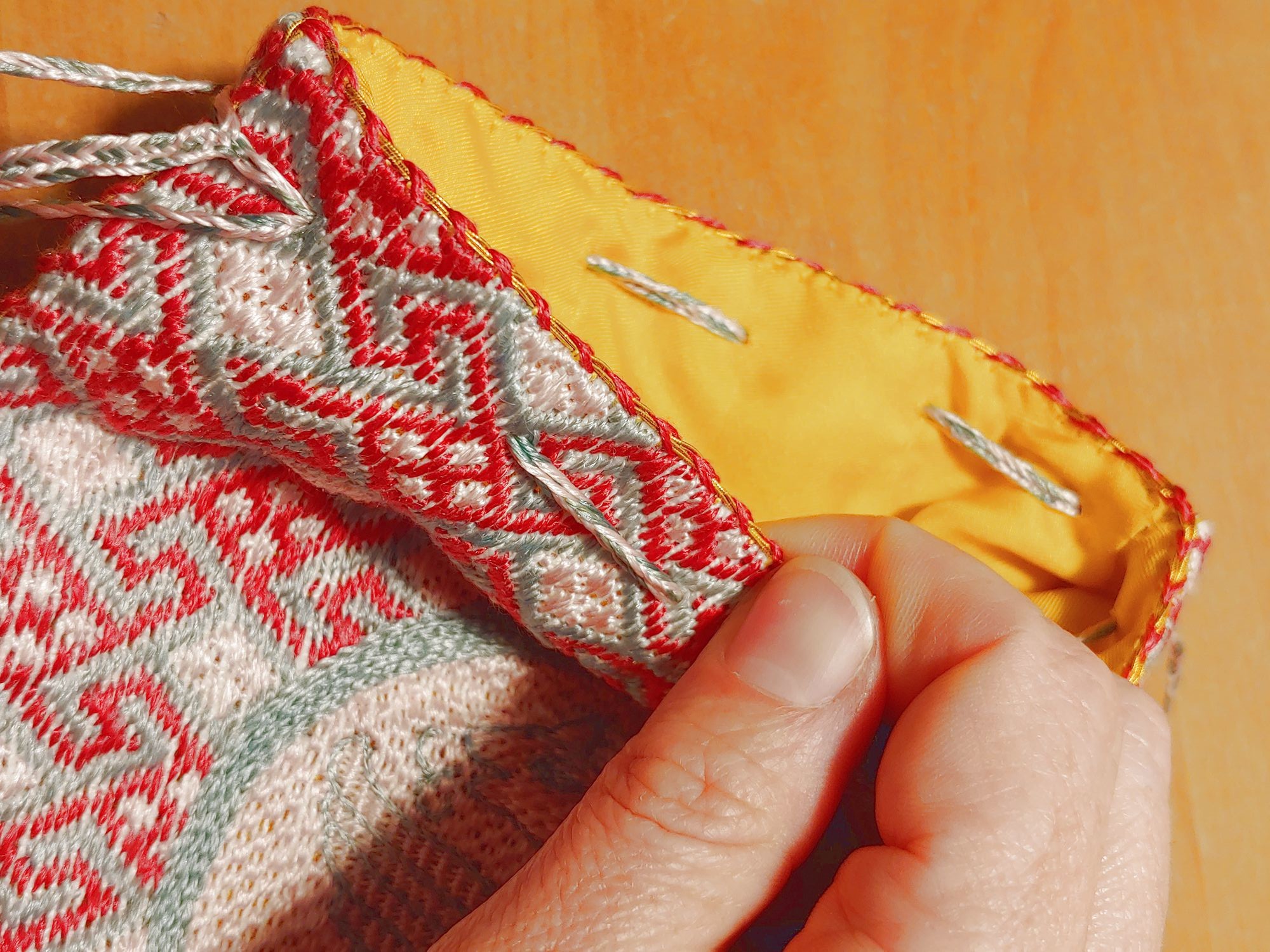
That's how the braided edge looks like - very similar to some extant purse decorations.
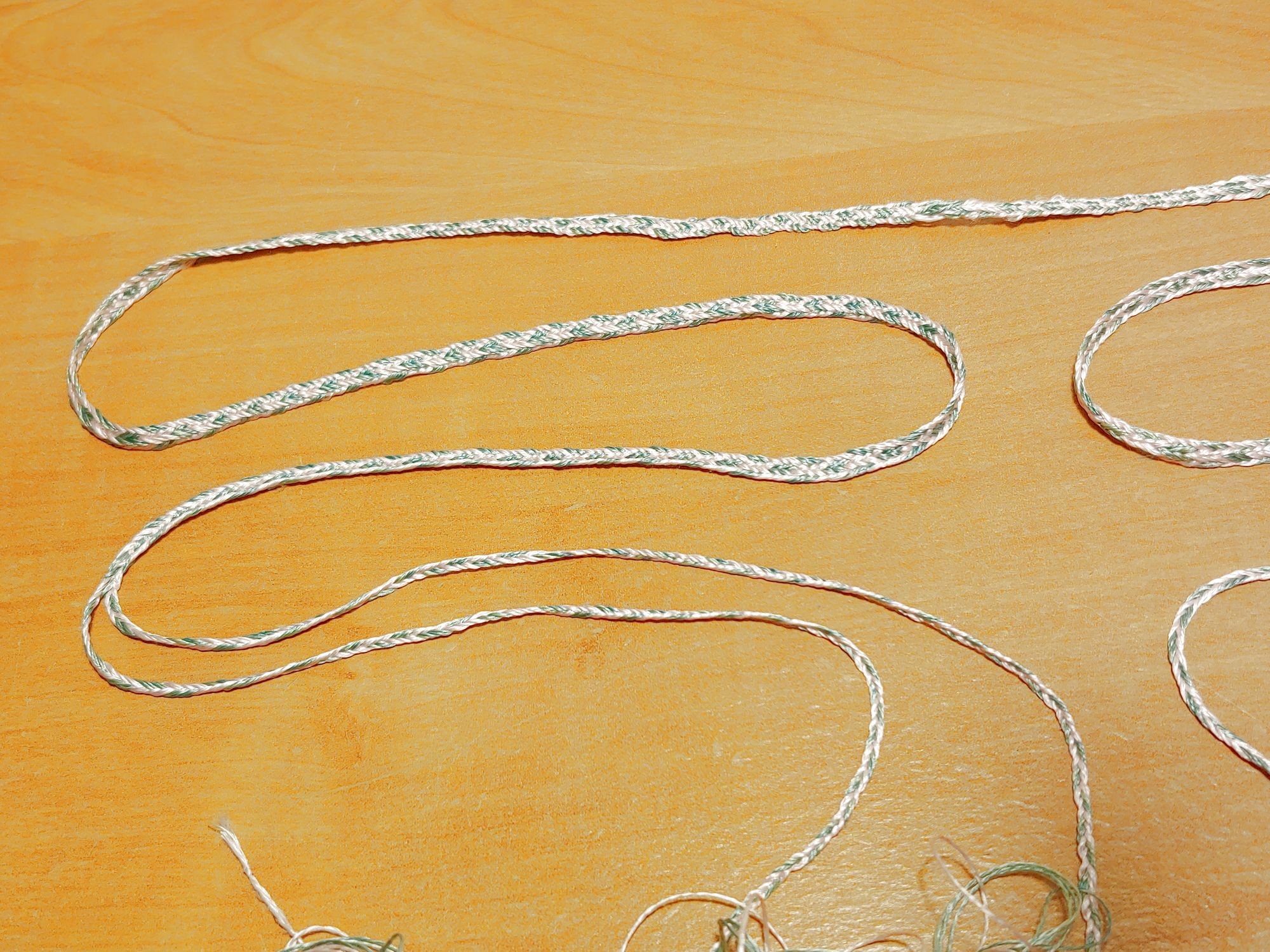
Quelle: "Book of Secrets - 15th Century Fingerloop Braiding" von Beatrix Nutz und "Fingerloop braiding patterns from 15th century texts" von Joanna Hobbins
The hanging and drawstring braids were done in one piece using fingerloop braiding. I started in the middle (you can see the fully authentic middle join top right) and did the 9-loop pattern 803.03 of an extant braid found at Lengberg Castle. After 40 centimeters I switched to "An open lace of 5 bows", which produces two separate braids at once, and braided 25 centimeters with this.
Reference: "Book of Secrets - 15th Century Fingerloop Braiding" by Beatrix Nutz and "Fingerloop braiding patterns from 15th century texts" by Joanna Hobbins
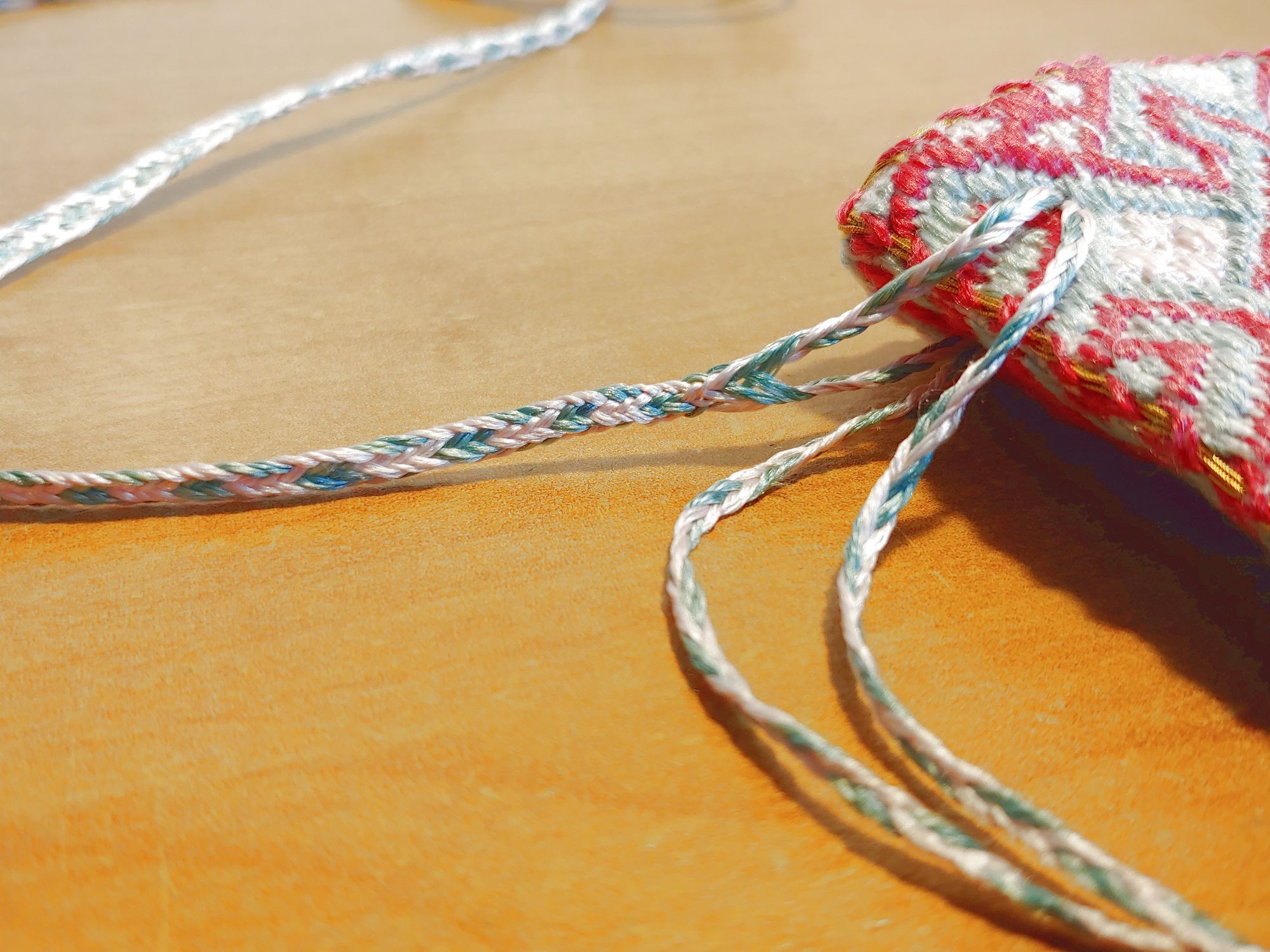
Here you can see how the braid divides. The schematic drawing and the reference for starting the braid in the middle can be found in: European Loop Braiding Part IV von Noémi Speiser und Joy Boutrop, page 28.
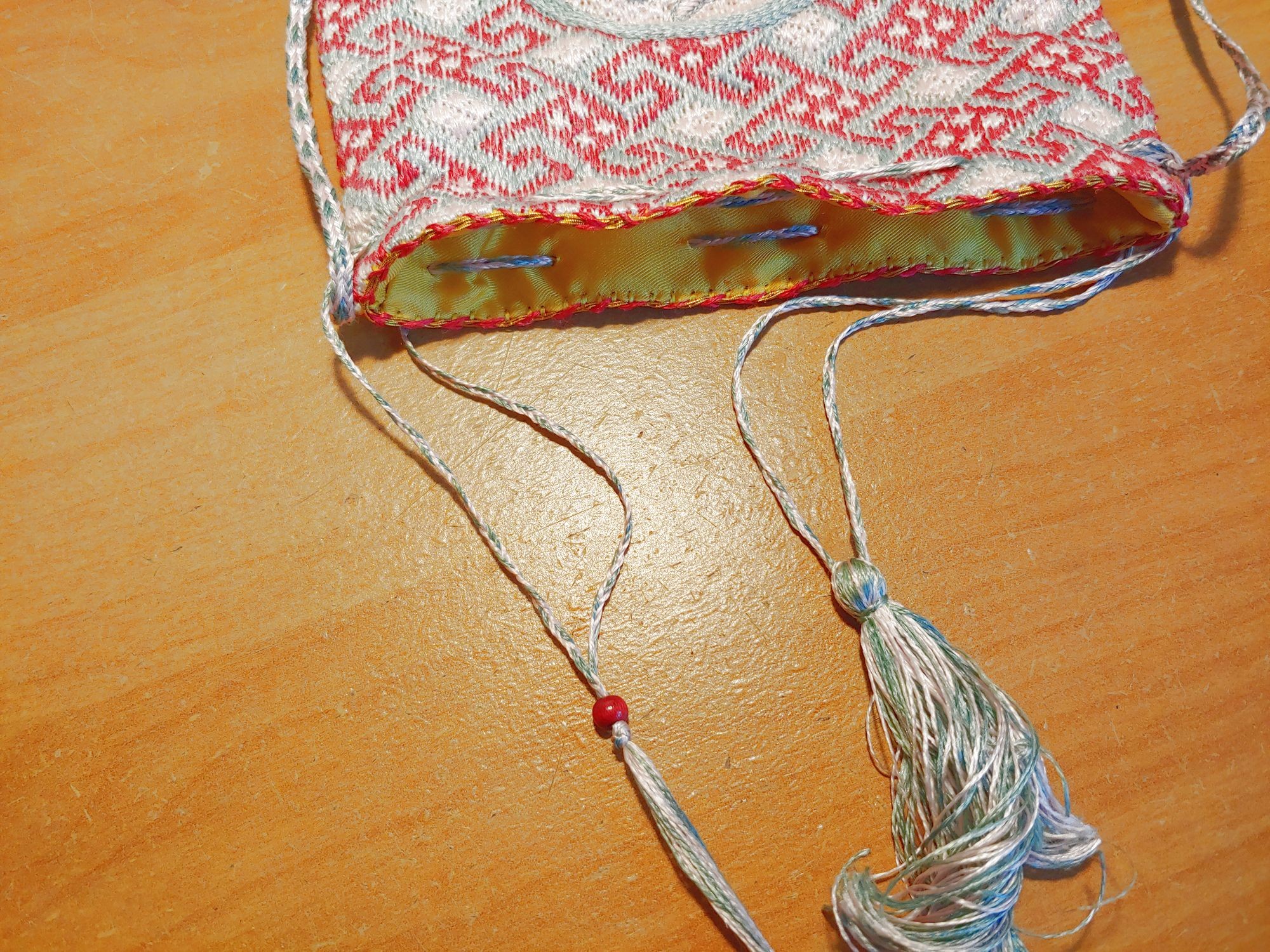
A small wooden bead fills up the tassel's head. Please note that I have no historic reference for this.
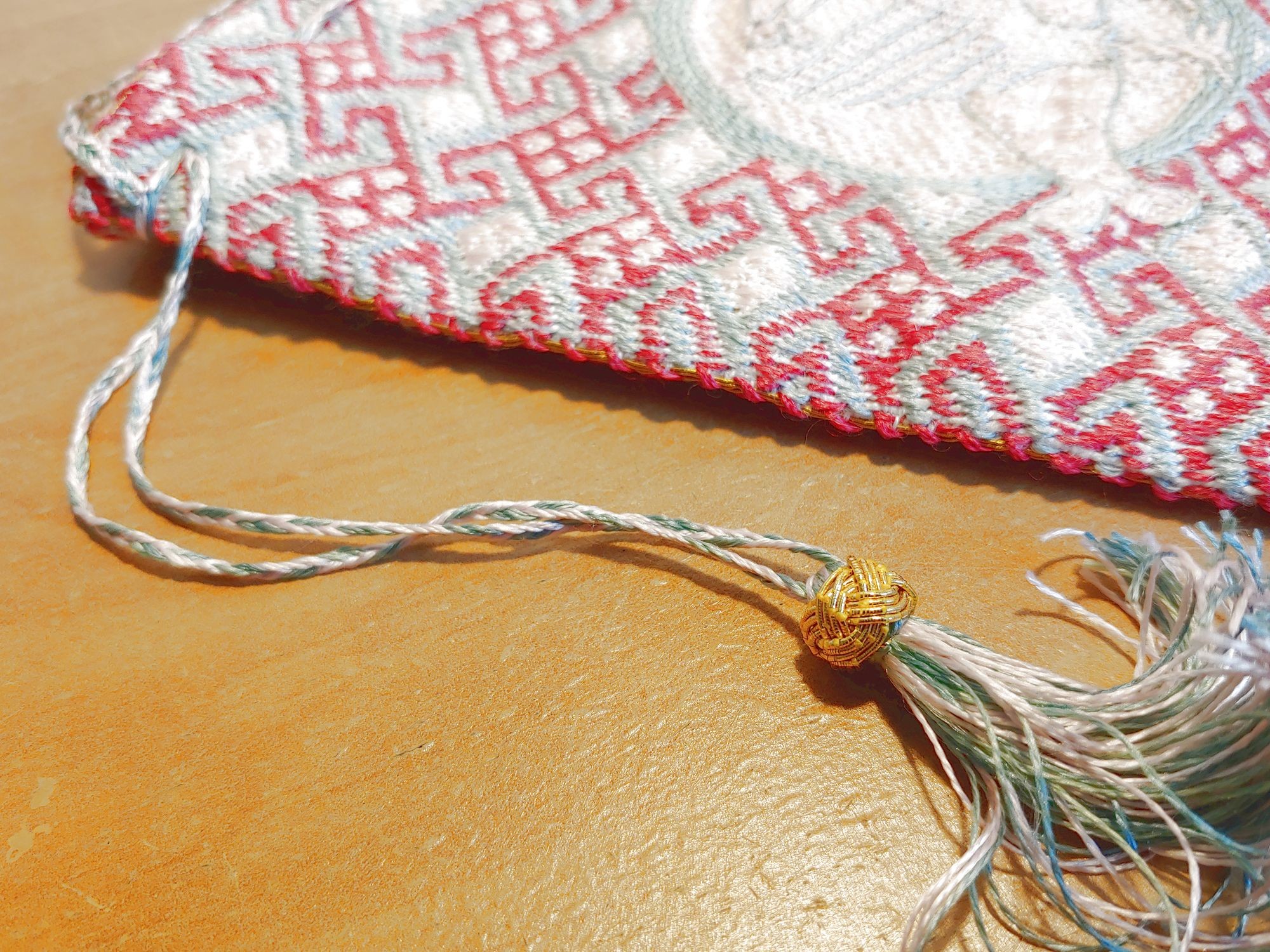
Finally the tassel is decorated with a Turk's head knot made of real goldthread.
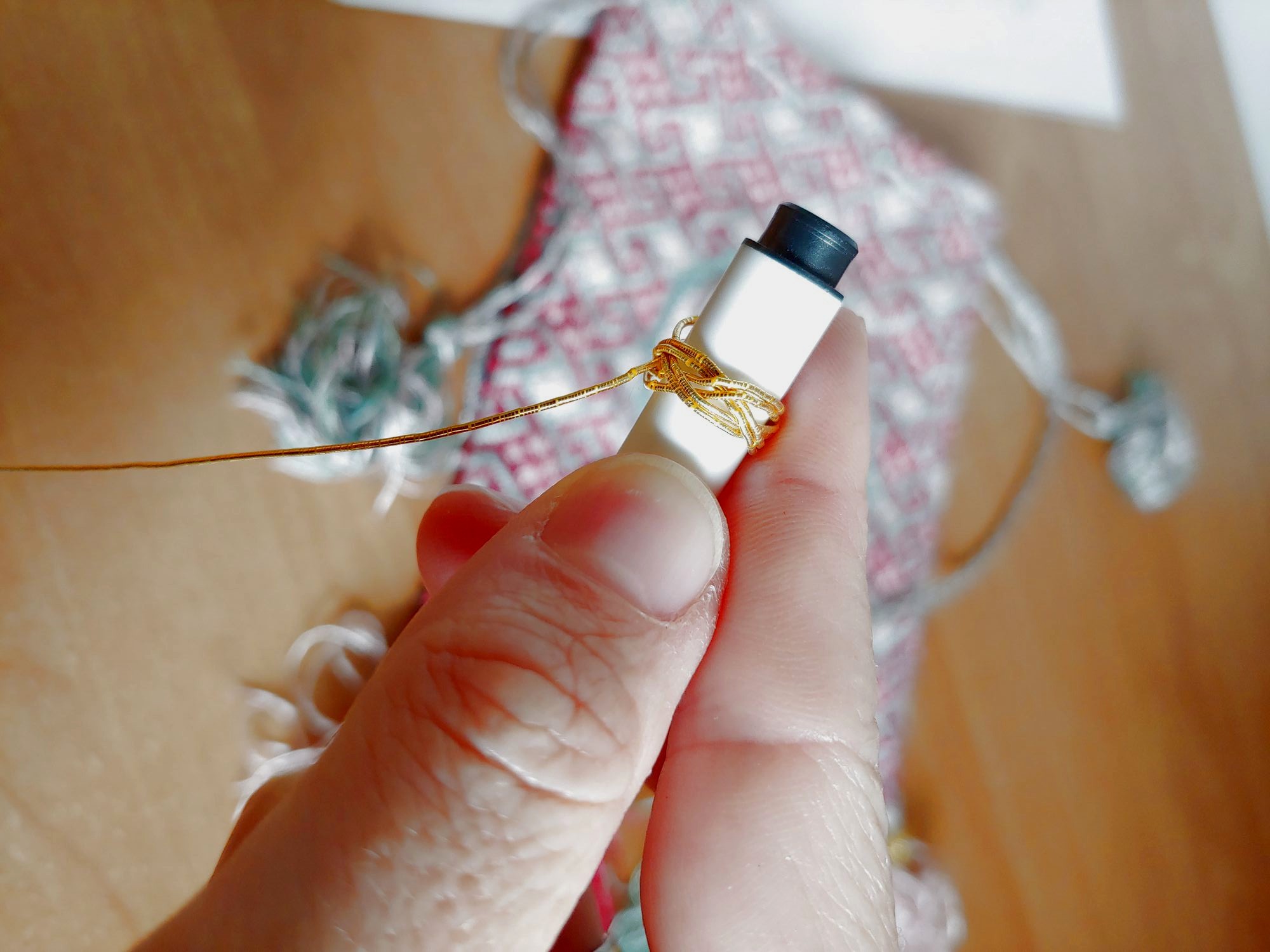
Life-hack: I usually wrap my Turk's head knots arount a pen and tighten them carefully afterwards to reach the needed size.
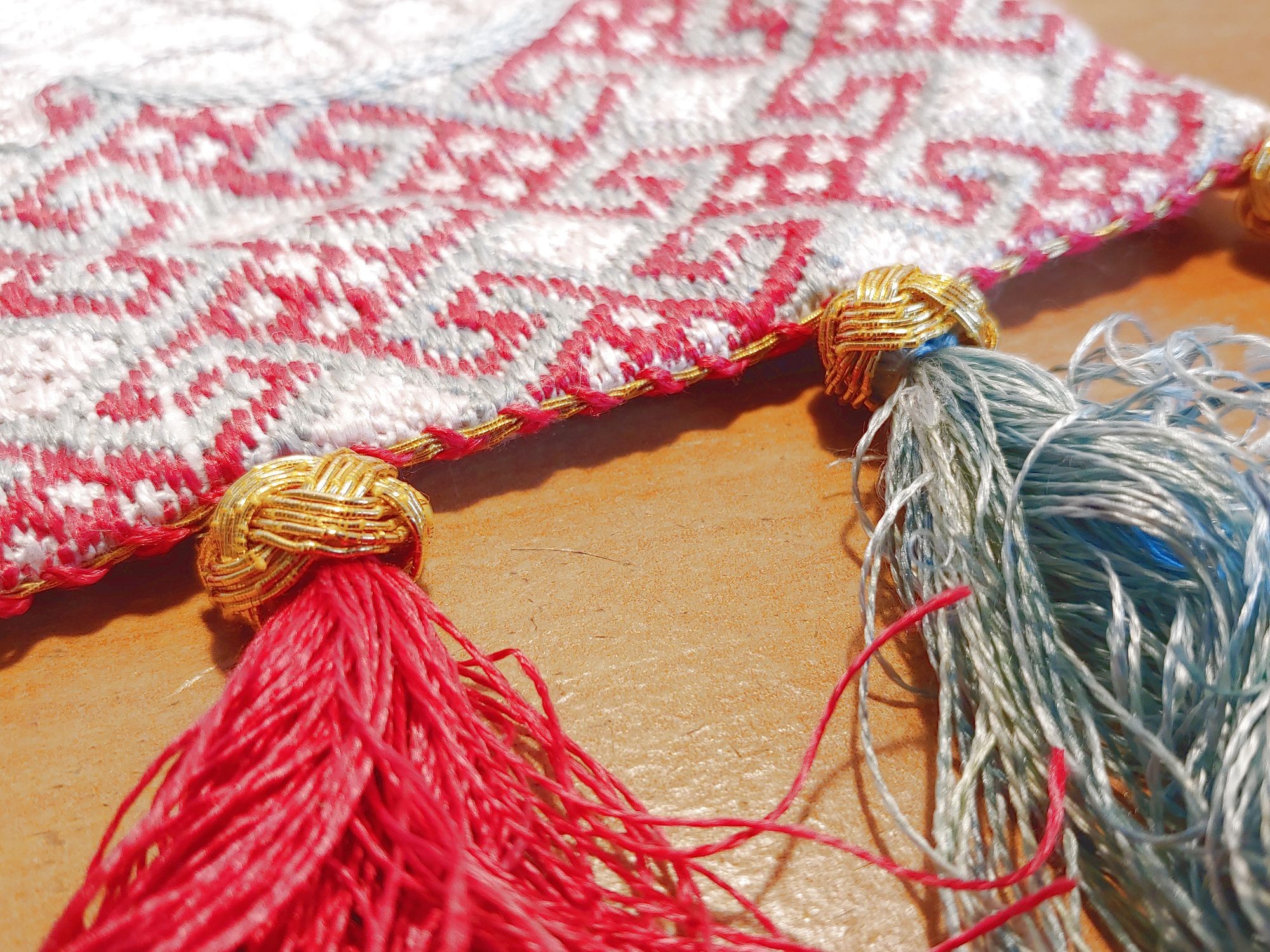
Also the tassels on the purses´ bottom edge got some sparkly decoration.
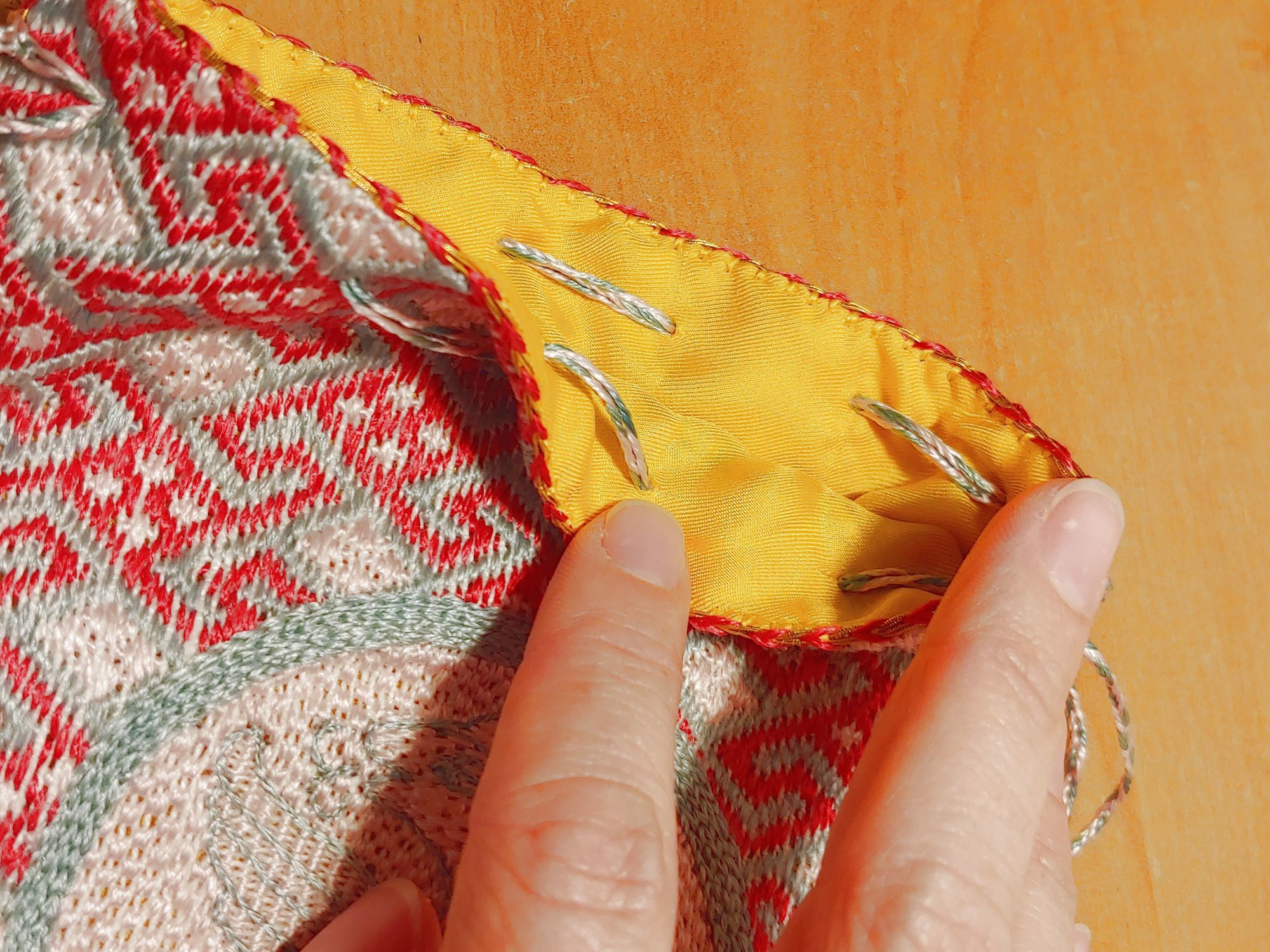
Lastly a small but important detail: There are no sewn eyeholes to thread the drawstrings through. Just like in some medieval examples I used an awl to widen the fabric until I could thread the drawstrings through. This method is way faster and and fits the medieval embroiderers` perspective that "Time is money"!
Dieser Post gehört zur Blog-Serie: Ein Almosenbeutel in Pink / a pink almoner's purse

